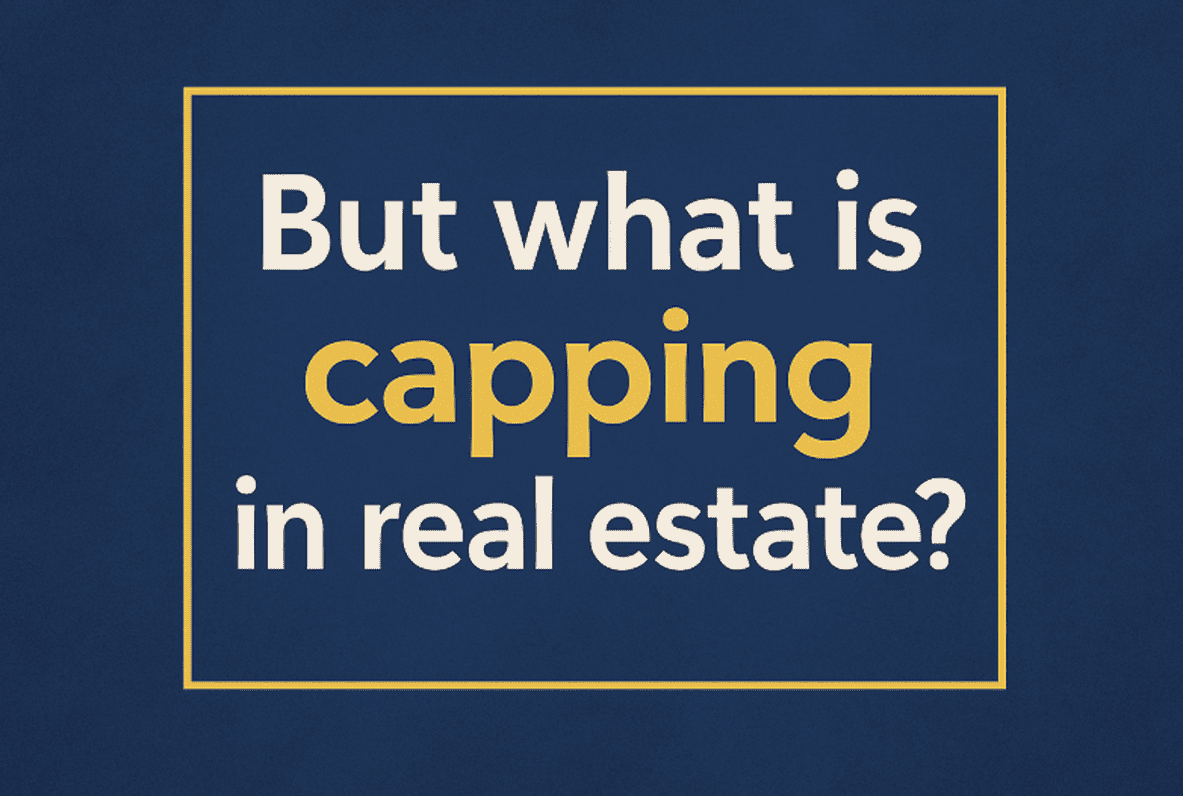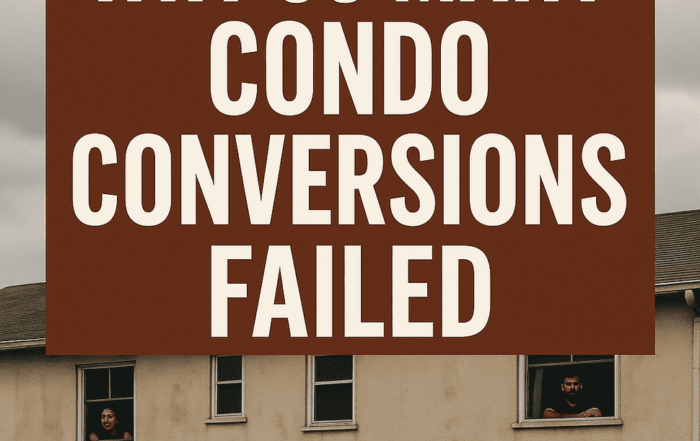
In the real estate world, understanding how your commission is structured is critical to building a successful career. One term that often comes up, especially at brokerages like Keller Williams, eXp Realty, and others, is “capping.”
But what is capping in real estate?
At its core, capping refers to the point when a real estate agent has paid a certain, pre-set amount of commission to their brokerage within a given year. After reaching that cap, the agent no longer has to split commissions with their brokerage for the rest of their anniversary year. Instead, they keep almost 100% of their commissions, only paying minimal transaction or administrative fees.
Let’s break it down step-by-step.
How Capping Works
When you first sign on with a brokerage, you usually agree to a commission split. This is typically something like 70/30, meaning you keep 70% of each commission check, and the brokerage keeps 30%.
However, that 30% you pay is not unlimited. Brokerages set a maximum contribution you are required to pay within your annual cycle — this is your cap.
Here’s a simple example:
-
You sell a house and earn a $10,000 commission.
-
With a 70/30 split, you keep $7,000, and $3,000 goes to the brokerage.
-
Over several deals, once your total paid to the brokerage equals, say, $20,000, you have capped.
-
From that moment on, for the rest of your anniversary year, you keep your entire commission (minus maybe a small per-transaction fee, like $250).
In this structure, the brokerage makes enough money to cover their costs early on, and agents are rewarded for continued success by keeping more of their hard-earned money.
Why Capping Matters for Agents
Capping is a major milestone for agents because it means bigger earnings for the remainder of the year. Once capped, every new deal you close puts significantly more money into your pocket.
Here’s why capping matters:
-
Financial Freedom:
After capping, agents essentially operate at close to full commission, which drastically increases take-home income. -
Motivation to Produce:
Capping creates an incentive for agents to work harder. Once you hit the cap, each additional transaction feels even more rewarding. -
Better Career Planning:
When you know your cap amount, you can set clearer financial goals, calculate how many transactions you need to hit your targets, and strategize your sales year more effectively. -
Brokerage Transparency:
Brokerages that offer a clear capping model often provide a more agent-focused environment, which can improve morale and long-term loyalty.
What Happens After You Cap?
After capping, you typically transition to a “100% commission” model, where you keep everything you earn except for small administrative fees.
These fees might include:
-
A transaction fee (flat per closing)
-
A risk management fee (errors and omissions insurance)
-
A brokerage oversight fee (in some cases)
However, these costs are minimal compared to giving up 20%–30% of your commission. Many agents say that once they cap, it feels like they are finally working for themselves, not just for the brokerage.
It’s important to note that your cap typically resets every year on your anniversary date with the brokerage, not necessarily on January 1st.
How Capping Compares Across Different Brokerages
Not all brokerages use a capping model, but the ones that do tend to attract agents focused on scaling their businesses.
Here are some examples:
-
Keller Williams Realty:
Agents often have a set cap based on their market center. After capping, they move to 100% commission until their anniversary year resets. -
eXp Realty:
Agents have an $16,000 annual cap. After reaching it, they keep 100% of their commission for the rest of the year, minus small transaction fees. -
Real Broker LLC:
They also offer capping structures, often with different caps based on market conditions and agent production levels.
Each brokerage sets its own cap amount, transaction fees, and specific rules, so it’s important to ask detailed questions before joining a company.
How Much Do You Need to Sell to Cap?
This is one of the most common questions new agents ask.
The math is straightforward:
-
Take your cap amount.
-
Divide it by the typical amount you contribute per deal.
Example:
-
Your cap is $20,000.
-
You typically contribute $3,000 per deal.
-
It would take about 7 deals to cap.
If you work in higher-priced markets, you might cap in fewer transactions. In lower-priced markets, it could take a few more.
Knowing these numbers allows you to plan your year and set realistic income goals.
What to Watch Out for When Capping
While capping is a major benefit, there are a few things to watch out for:
-
Hidden Fees:
Some brokerages advertise low splits or capping but make up for it by charging high transaction or desk fees. -
Cost of Tools and Services:
Some brokerages charge separately for marketing tools, websites, leads, or training, which can eat into your profits. -
Reset Dates:
Always clarify when your anniversary year starts and resets. Missing it by a few days could cost you thousands. -
Performance Requirements:
Some firms might offer lower caps only if you maintain a certain production level. Make sure you understand all the requirements.
Being aware of the full picture ensures you truly benefit when you cap, without surprises later.
Is Capping the Best System for Every Agent?
Capping tends to benefit:
-
Full-time agents
-
High-producing agents
-
Agents focused on growing their business year-over-year
However, if you are brand new to real estate or plan to work part-time, you might not reach your cap within the year. In that case, you may want to compare brokerages carefully and choose one with lower monthly fees or other beginner-friendly options.
Still, capping is one of the clearest, fairest structures for ambitious agents who plan to grow.
Final Thoughts
Capping is a smart model for agents who are serious about making real estate a full-time, long-term career. Once you understand it, it becomes a clear advantage:
-
It motivates production.
-
It rewards success.
-
It creates transparency between the brokerage and the agent.
If you are evaluating brokerages, always ask about their capping policies and make sure you understand what it will take for you to cap, and what your earnings will look like after you do.
Understanding what capping in real estate really means could be one of the most important steps you take in maximizing your income and building a thriving real estate business.
Why Graystone Is Different
At Graystone, we’re not just building agents — we’re building consultants.
The difference? Consultants don’t chase clients… they keep them for life.
Here, you’ll learn how to market properties the right way, understand the investor mindset, and become the go-to advisor your clients actually rely on.
Our cap changes slightly each year depending on market conditions, but our goal is to keep it under $5,000.
Our commissions average 80% to 90%, with the opportunity to reach 100% once you meet production goals.
This structure is designed to reward serious agents while giving you the tools to grow a long-term business.
If you’re ready to stop feeling like a salesperson and start feeling like a trusted consultant, it’s time.
Connect with us today!
Pick your expert. Book your free 15-minute consult now. We are here to help!
Our Top Articles
How to Create an HOA in Florida (And Why You Might Need One If You’re Buying Into a Condo Mess)
How to Create an HOA in Florida (And Why You Might Need One If You’re Buying Into a Condo [...]
Why So Many Condo Conversions Failed?
Creating an HOA When You Own the Whole Building (And Why So Many Condo Conversions Fail Without One) Let’s [...]
Property Profit Academy:
✔ Learn to buy properties with little to no money down.
✔ Build a $10M portfolio step by step.
✔ Master strategies like BRRRR and house hacking.








